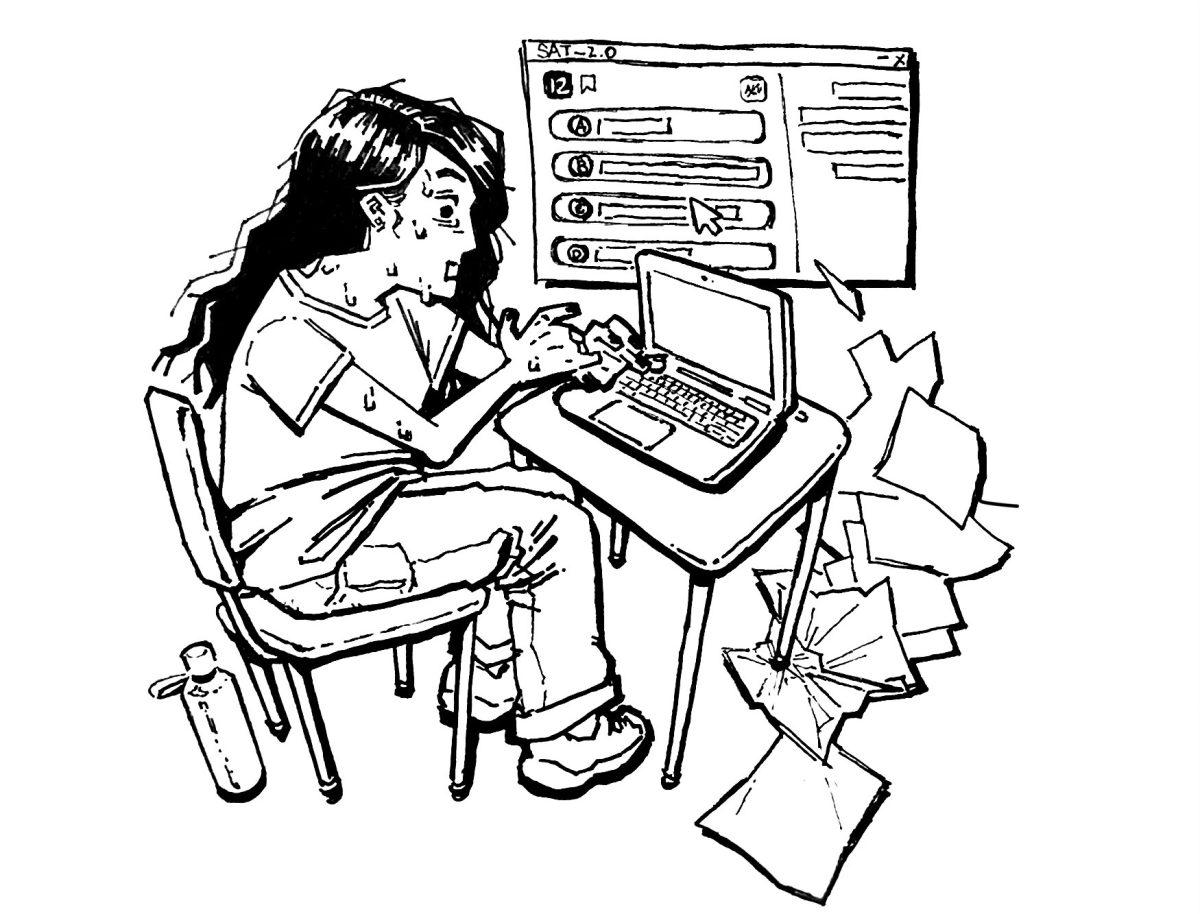The SAT and the PSAT will be fully transitioning from paper tests to digital ones for the U.S. starting in the fall of 2023, according to the College Board. Last year, the digital version was released internationally ahead of the U.S. release.
Current juniors will take the digital PSAT on Oct. 18 according to a Talk203 email sent on Sep. 12. There will be a mandatory homeroom session on Oct. 3 where students will learn to use the testing program—Bluebook—on Chromebooks.
With the removal of the no calculator math section, the new tests will be an hour shorter, but will continue to be scored out of 1600 points. Each test section will be divided into two parts called “modules.” The questions in the second module will adapt to how the students perform in the first module.
“It is very similar to the MAP testing that they do in middle schools,” said Debra Ericson, the testing coordinator at Central.
Ericson welcomes the new testing format.
“I feel students are so used to everything being on their Chromebook that [digital tests are beneficial for] them,” Ericson said. “[Students] loved it when we did digital AP testing in the spring, especially for any essays because it was a lot easier to type an essay rather than write it.”
CollegeBoard aims to increase efficiency without sacrificing accuracy using digital tests, but some Central students are wary of the new changes.
“I’m hoping I can take it before the one in school just to see what I would get; everything I’ve heard about [the digital test] seems really questionable,” junior Iris Shadis-Greengas said. “It’s always been the same standard for so many years, so I don’t really like that that’s changing because that means that we’re going to be held to a different standard than previous years, especially with college admissions.”
Shadis-Greengas said that although students may benefit from a reduced testing time, she would feel more pressure under it.
“I think the benefit of the paper SATs [is that] you can write out your thoughts and answer the questions on the paper first which is really useful for me,” Shadis-Greengas said. “I think that’d be way harder [on] the digital one.”
Despite these concerns, Ericson reassured students that the new digital era will be favorable. According to The College Board, the digital test will show very similar results to the paper SAT.
Going digital also increases the accessibility of the tests.
“In the past, you had to complete the standard testing on [one] day,” Ericson said. “You didn’t have a makeup date [or] any other options. The [new] testing window is actually the entire month of October. That allows schools [with less accessible technology] to stagger their testing so that everybody has an opportunity [to test].”
Students will now be able to make up the PSAT and SAT if they are absent on a test day because of this new testing window.
Senior Heather MacDonald took the paper SAT on Aug. 26 at East Chicago High School in IN. Because of college application deadlines, that was MacDonald’s last SAT attempt.
“I’m kind of bummed out about it [since] maybe I would have gotten a better score if I got to take [the digital version] junior year.” MacDonald said.
As this is the first year the test will be available for U.S. students, the experience and performance in the U.S. is still uncertain.
“You’re going to see people really afraid of what [going digital] is going to mean,” Ericson said. “We don’t know, but [we’re going to] find out.”




